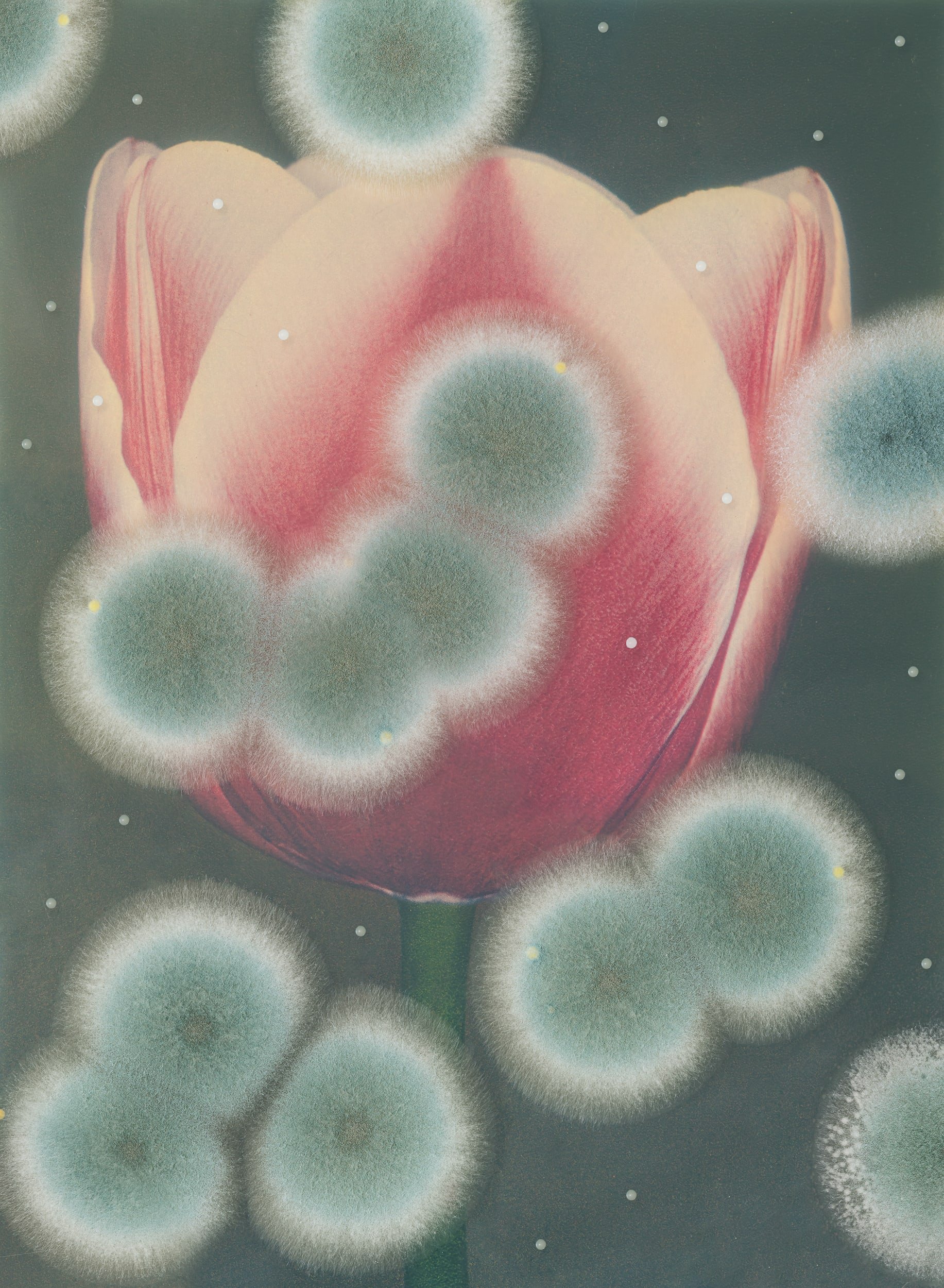
Too close to notice
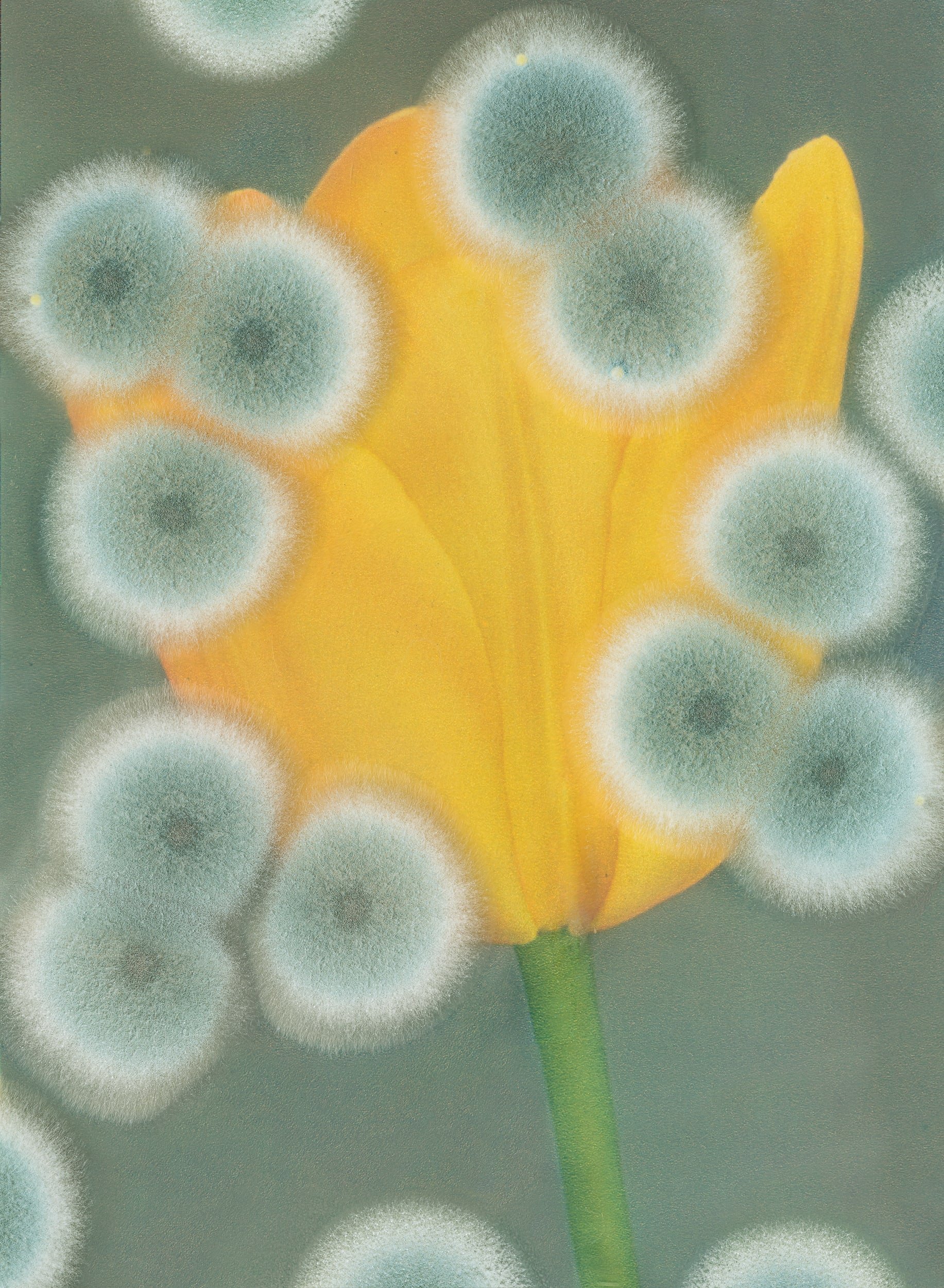
"The question of what price we are willing to pay for lush, colorful, and long-lasting floral splendor is raised with these at once beautiful and terrifying works by Jeleff and Pichler. In their series ‚Too close to notice‘, they prominently feature the environmental mold Aspergillus Fumigatus, which travels around the world on tulip bulbs. In 2009, it was identified as the cause of ominous diseases. After years of high-level use of fungicides in the tulip industry, the fungus has developed a resistance to certain antimycotics that are also used in human medicine, consequently common medications no longer work for affected patients."*
*Text taken from the exhibition Flowers Forever at Kunsthalle München
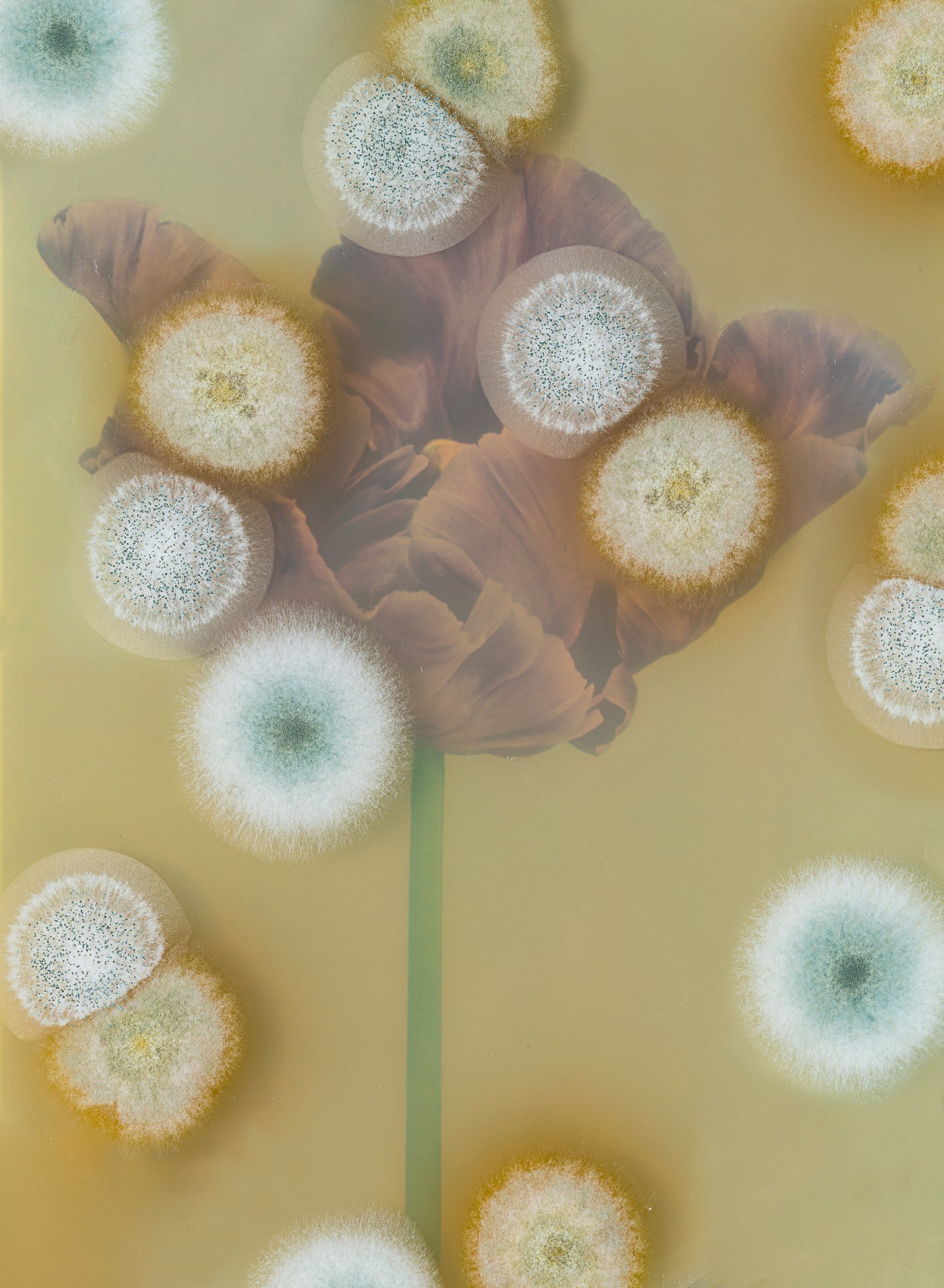
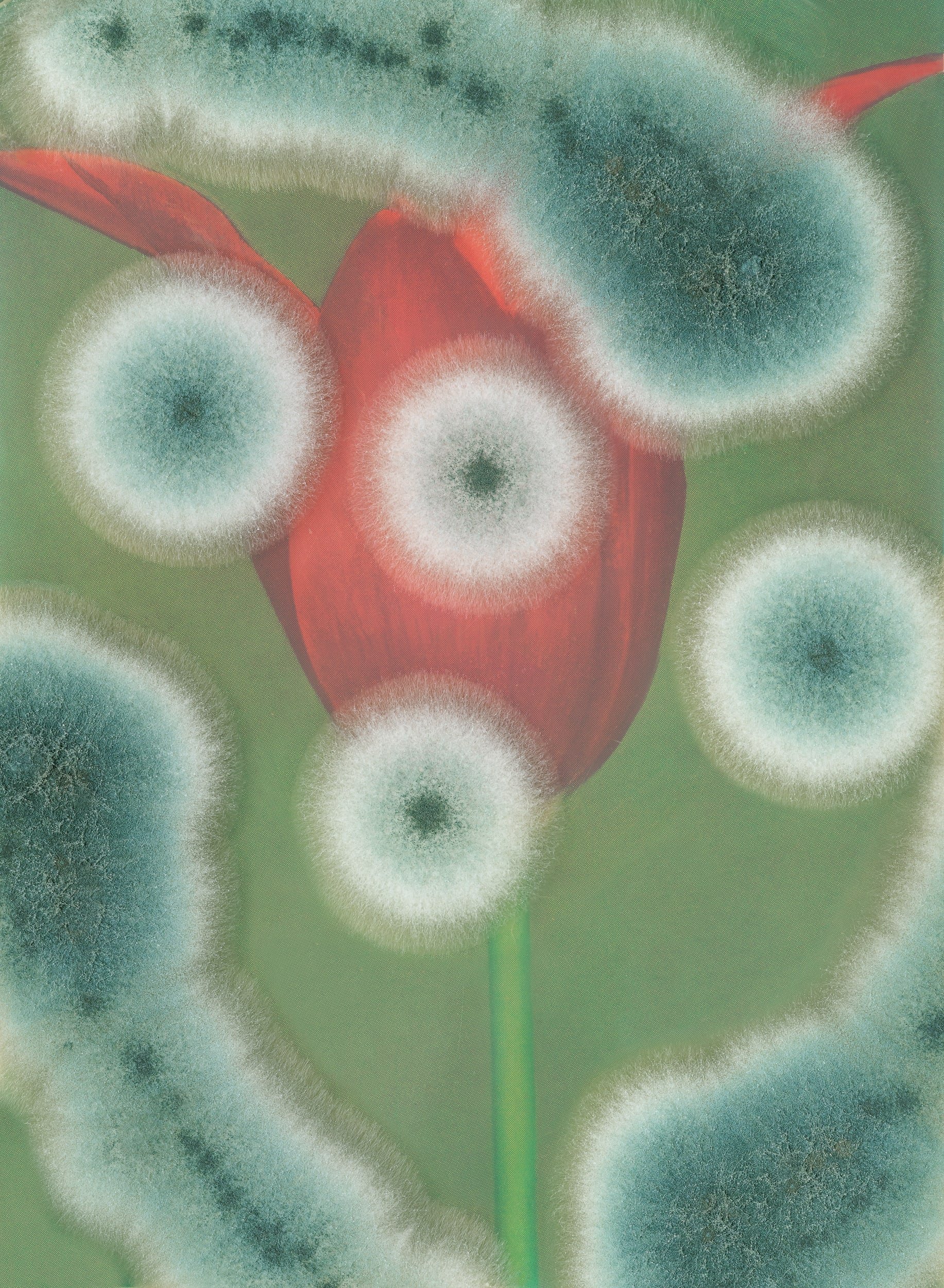
In 2009, doctors at a Dutch hospital were faced with a difficult situation: some patients contracted invasive aspergillosis. The antifungal drugs administered had no effect and several patients died. It was feared that the trigger was a resistant strain of a mold called Aspergillus fumigatus. But where did this resistance come from?
Tissue samples from aspergillosis cases archived at this hospital in previous years were analyzed. Since the new samples did not match them, it turned out that the resistance probably had an environmental source. Eventually, the resistant strain of the fungus was found in a surprising location: a flower bed in the hospital garden where tulips had been planted.

The resistant Aspergillus fumigatus turned out to come directly from the tulip bulbs – bulbs mass-produced (around 2 billion a year) by the Dutch tulip industry, which are dipped in an antifungal, azole-containing solution to stop the growth of fungi on plants. Excessive use of azoles in the production of tulip bulbs (the same antifungal agent used in patients) resulted in a resistant strain of Aspergillus fumigatus, which entered patients' lungs via the spores of the tulips from the hospital garden.
In October 2022, the WHO published a list of 18 fungal pathogens, which also includes Aspergillus fumigatus. This list is the first global attempt to systematically prioritize fungal pathogens based on their perceived public health importance.
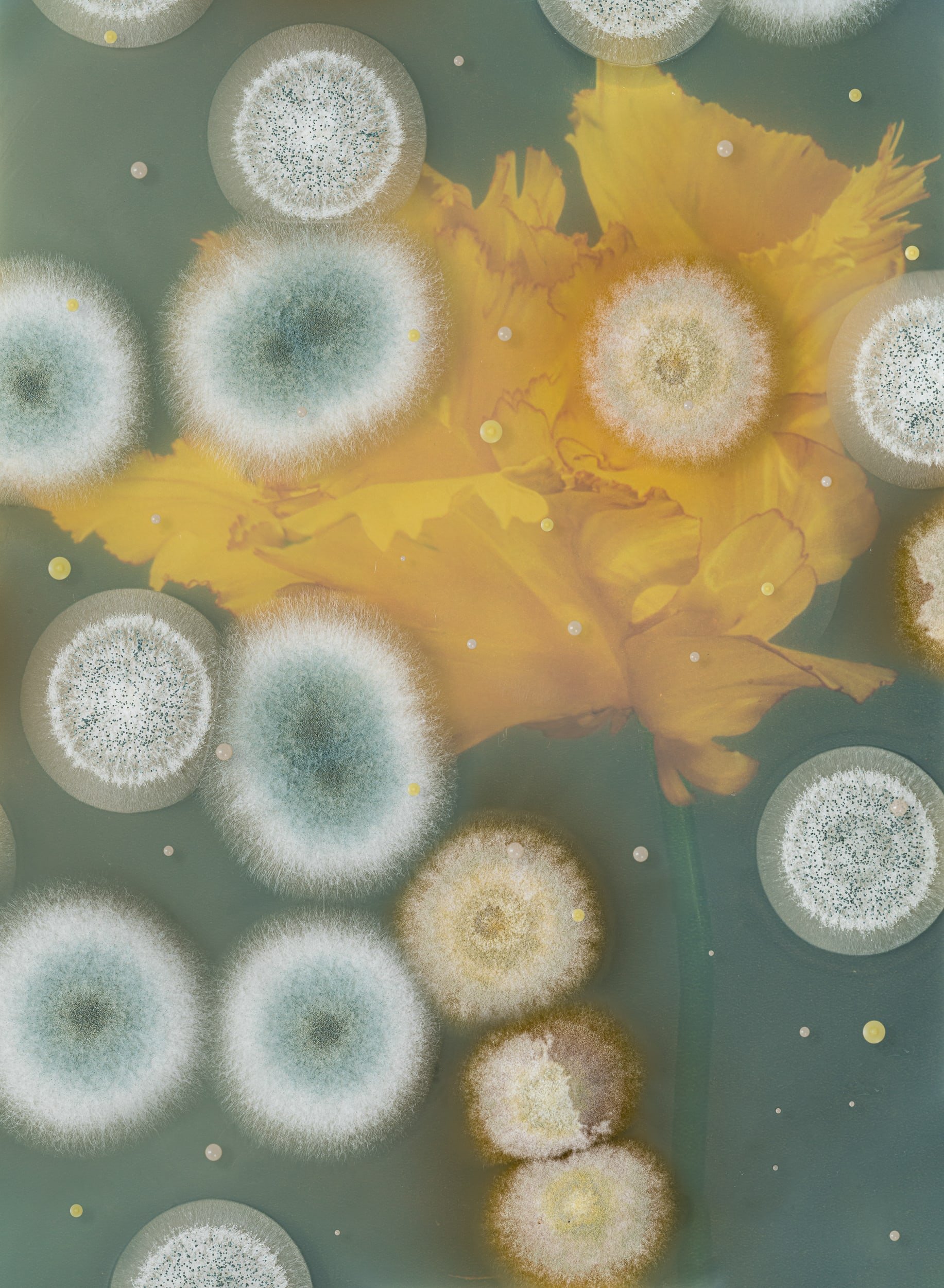
The photo project 'Too close to notice' addresses the increasing problem of antifungal resistances, and in general antimicrobial resistance. The processes of resistance development result largely from the overuse of resources - such as, in this case, the overuse of azole against plant pathogens. Human health is closely linked to the health of animals and the environment, and the way how we condition nature. This project ultimately aims to draw attention to the complex relationship between human health and the health of plants, animals, and the ecosystem.
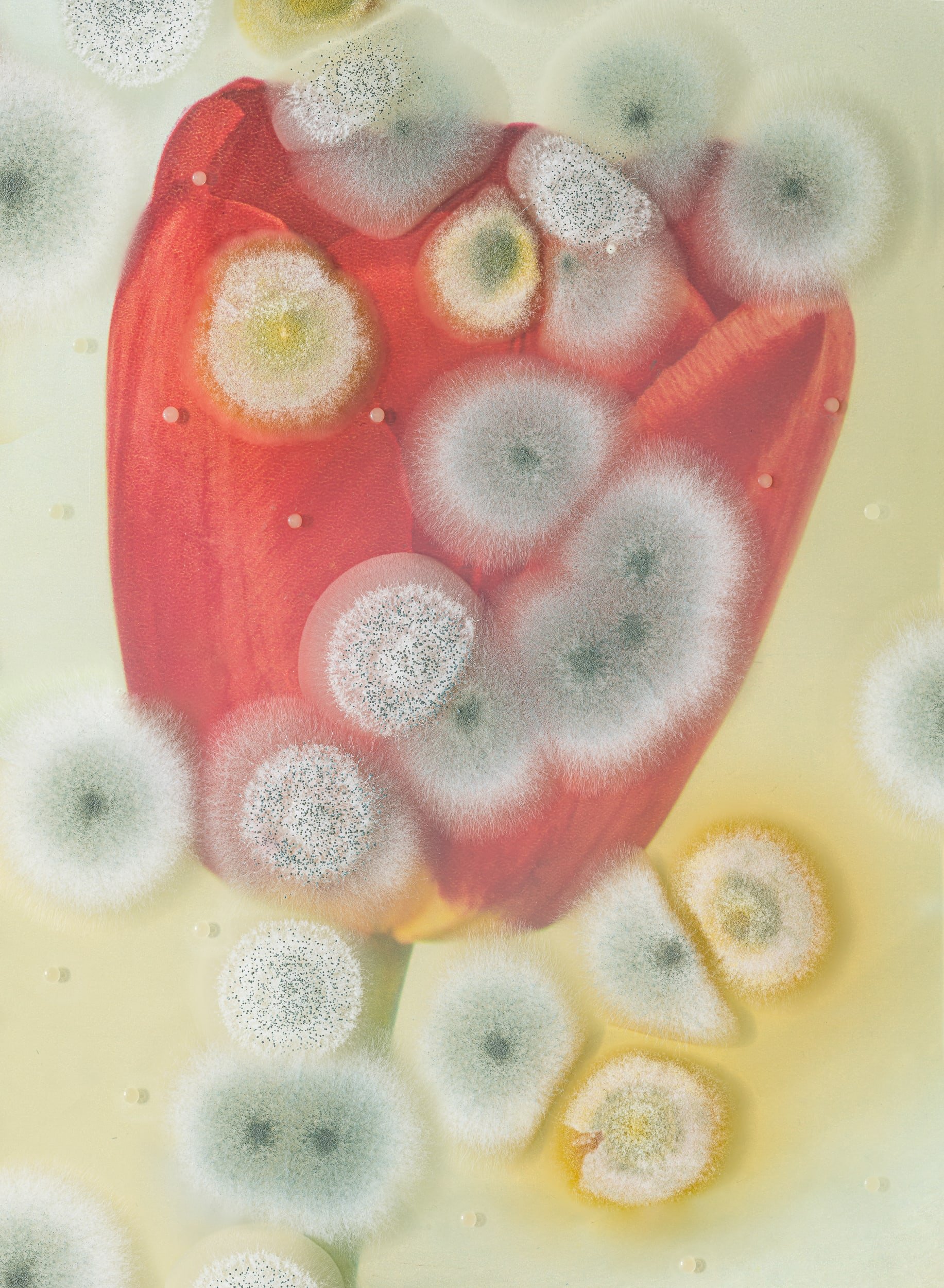
For the photos, a large number of different tulip bulbs were ordered from Dutch flower mail order companies. A smear was taken from each onion by our project partner – Dr. Martin Kirchmair - at the University of Innsbruck. The spores obtained from the smear were further cultivated under laboratory conditions on transparent agar culture media in Petri dishes with a diameter of 20 cm. After around 7 to 10 days of growth, the petri dish containing the pure culture of the Aspergilli from a tulip bulb was then placed on a picture from a tulip catalog showing the flowering plant of that bulb variety. The resulting photos illustrate both the blooming tulip and the 'stowaways' called Aspergillus fumigatus that were brought along on its bulb.
A project in collaboration with Klaus Pichler (photographer) and Dr. Martin Kirchmair (microbiologist, University Innsbruck)
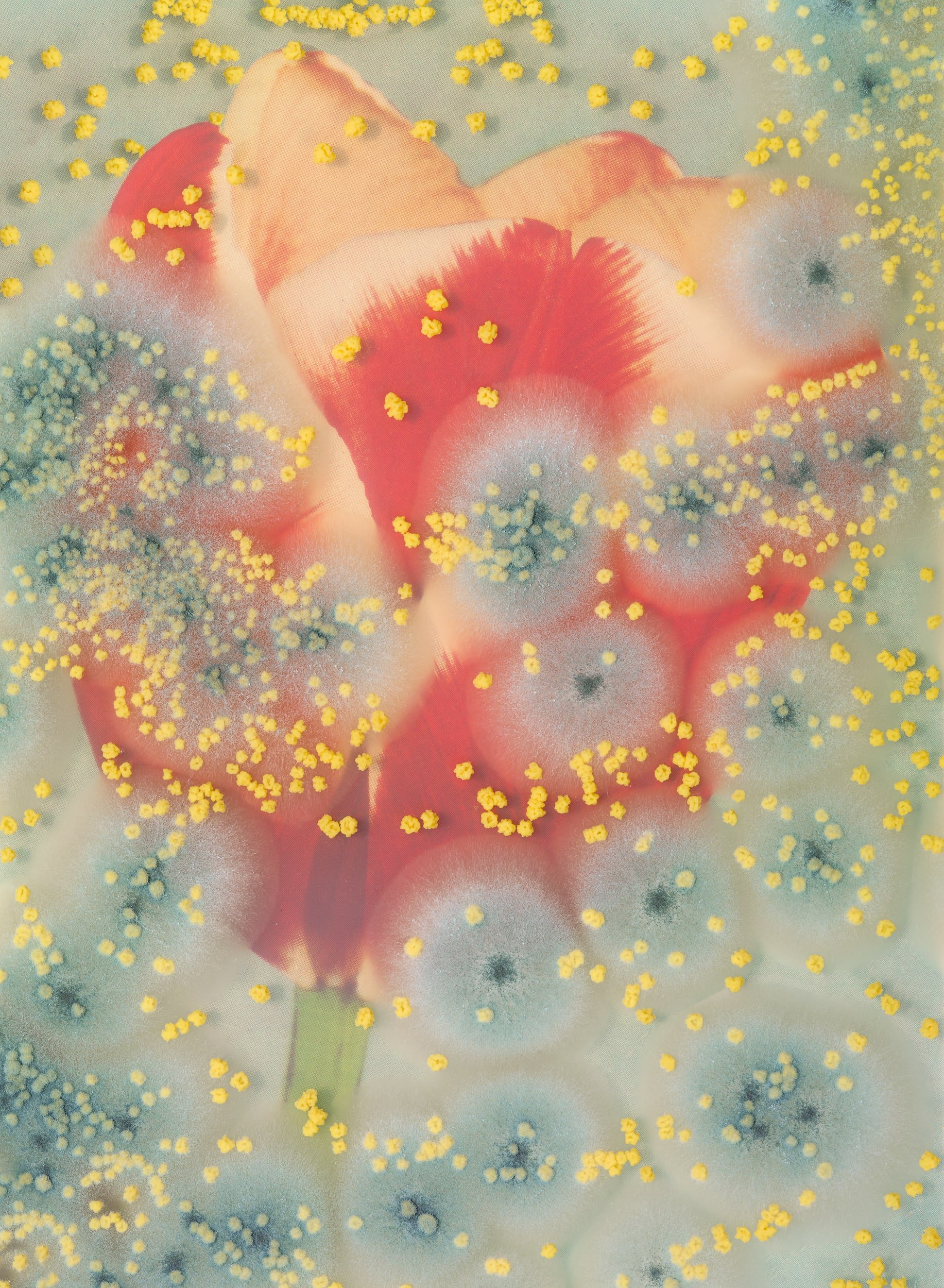
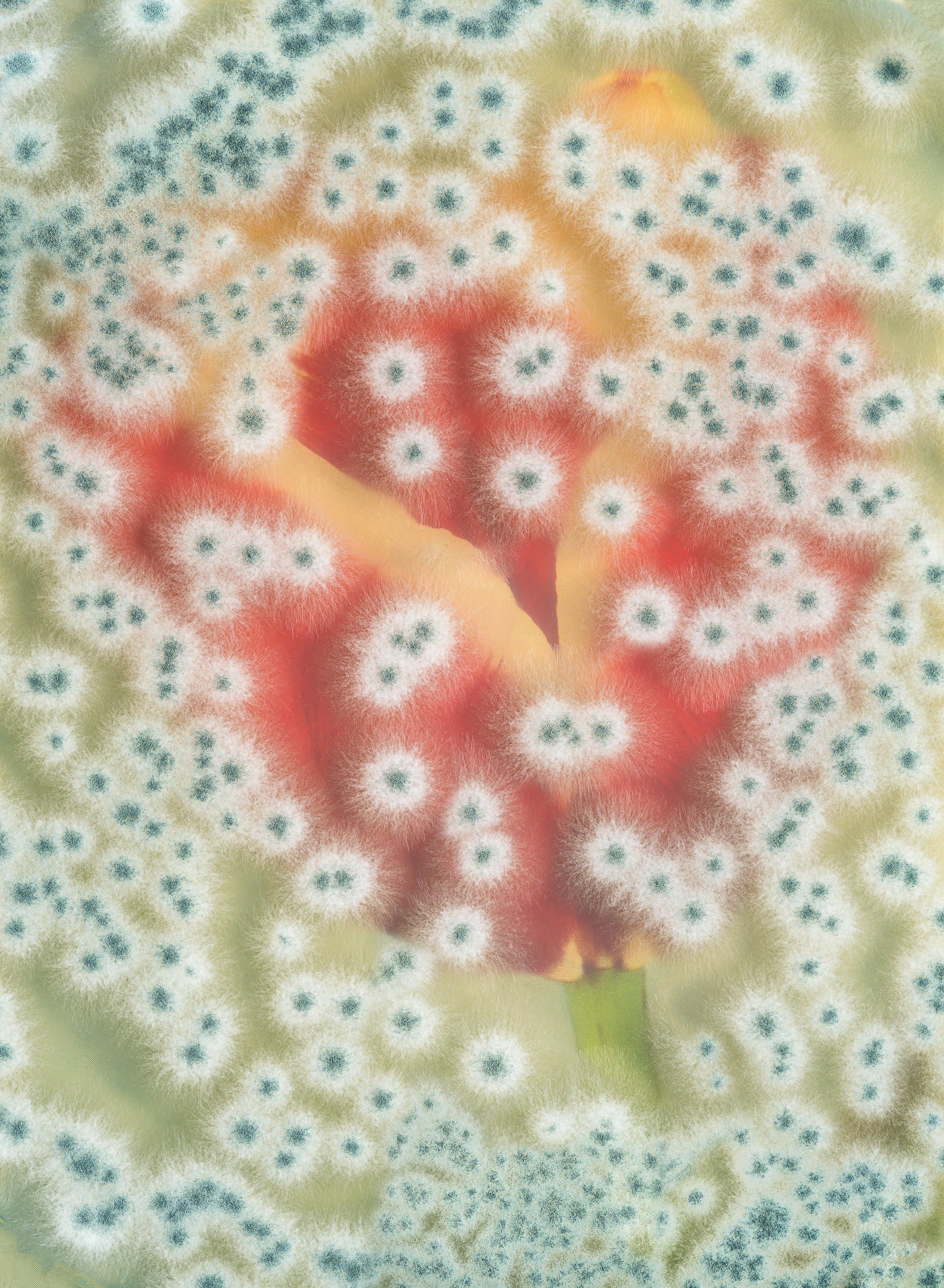
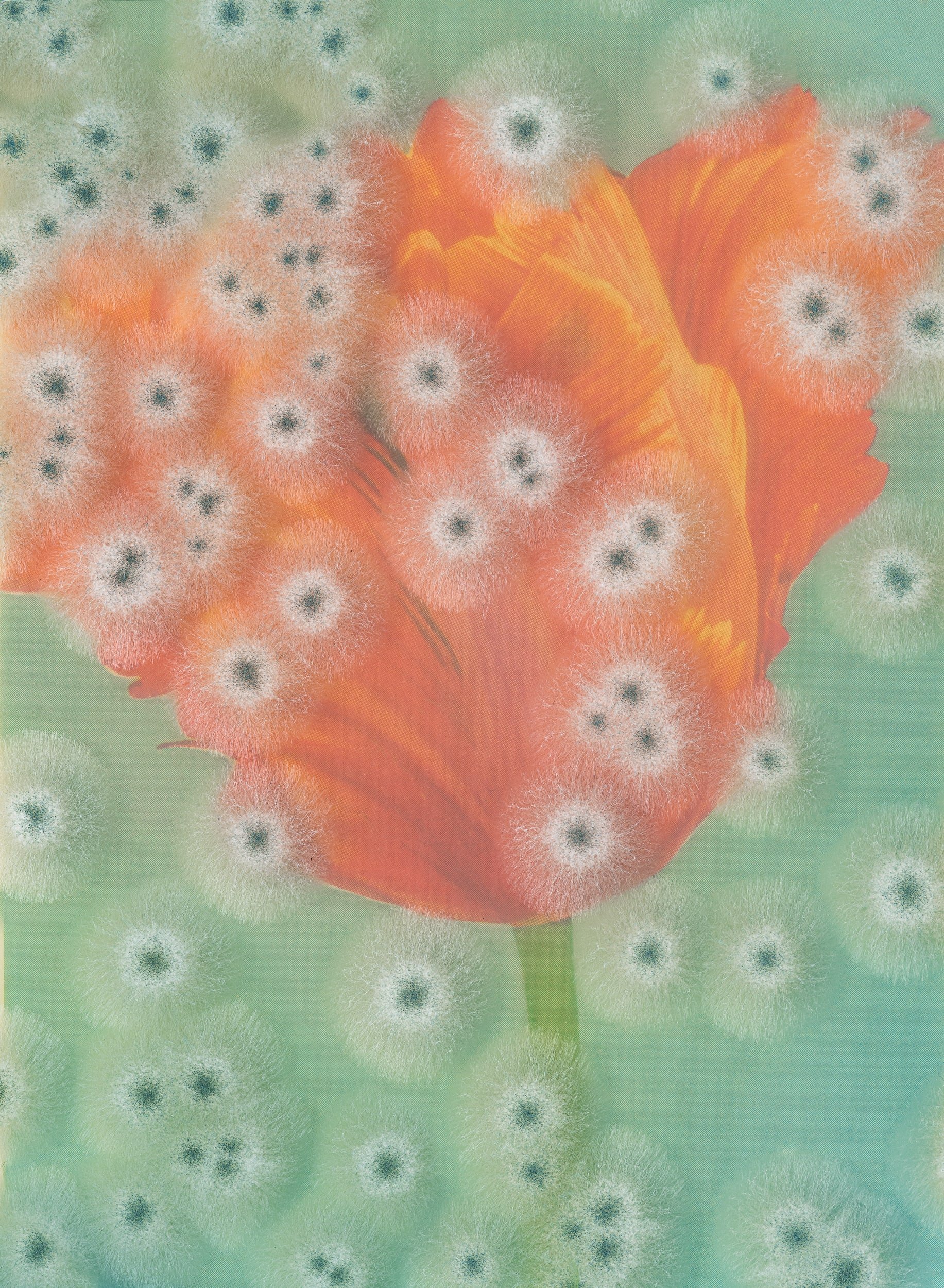
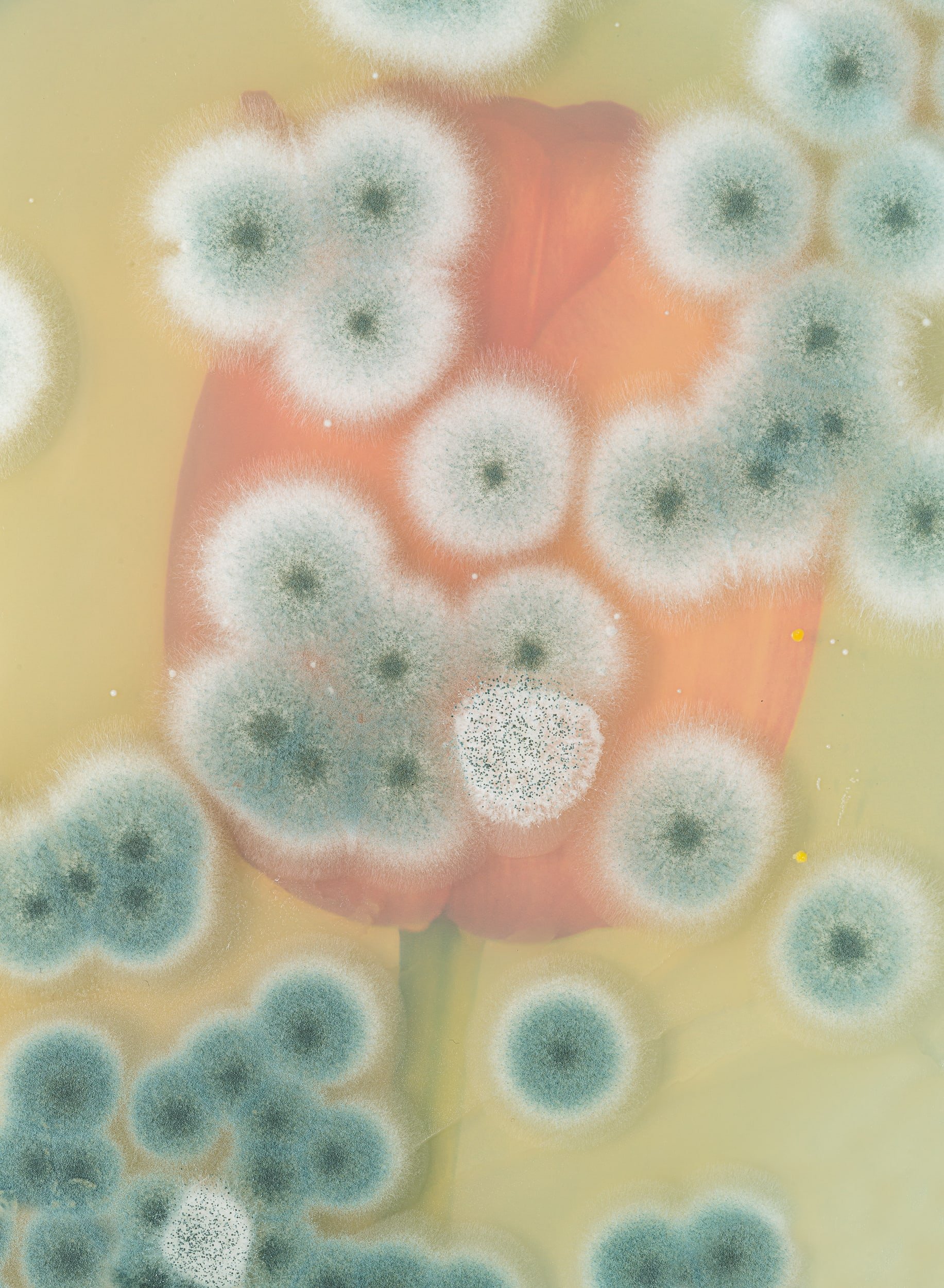

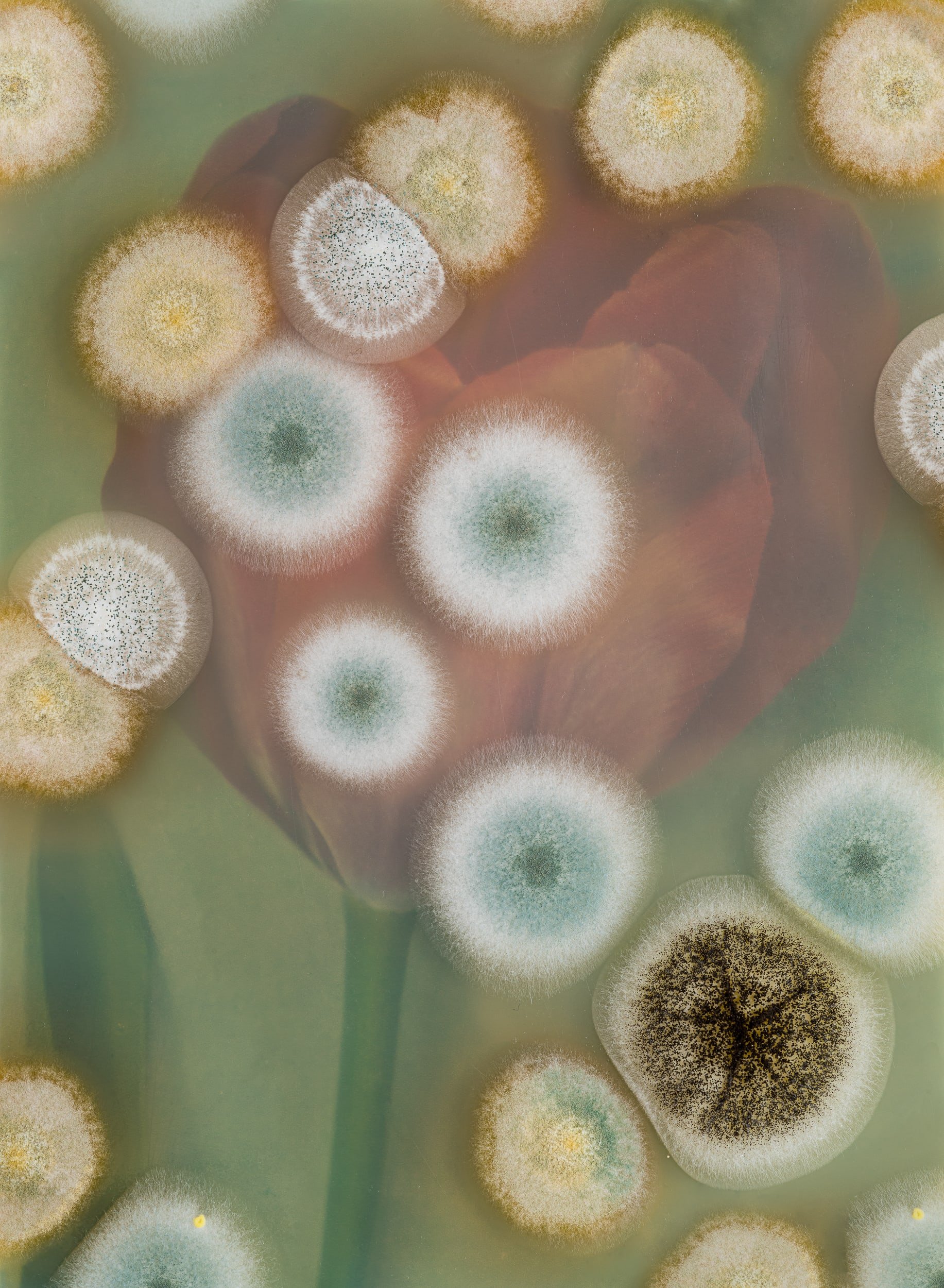
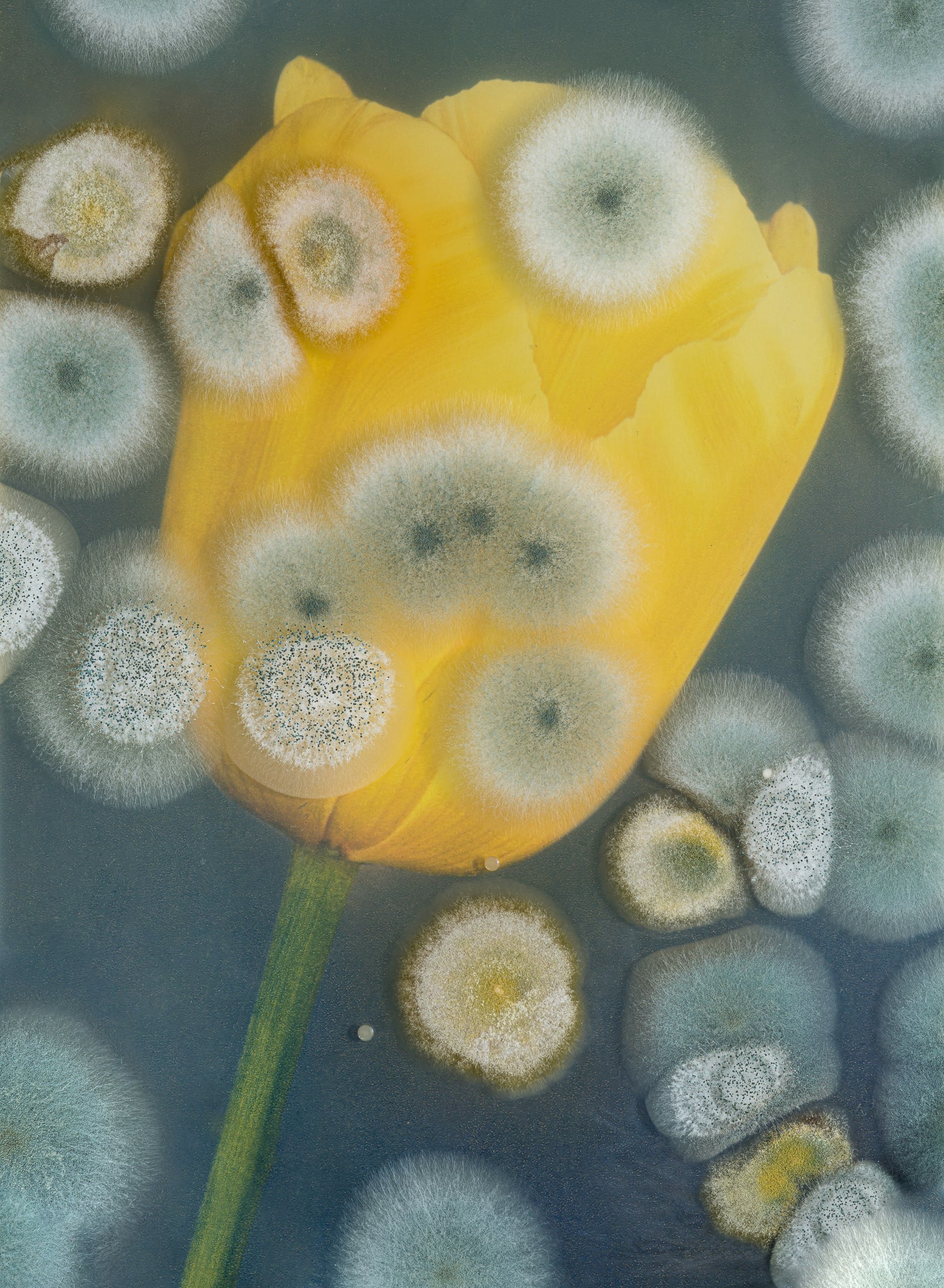

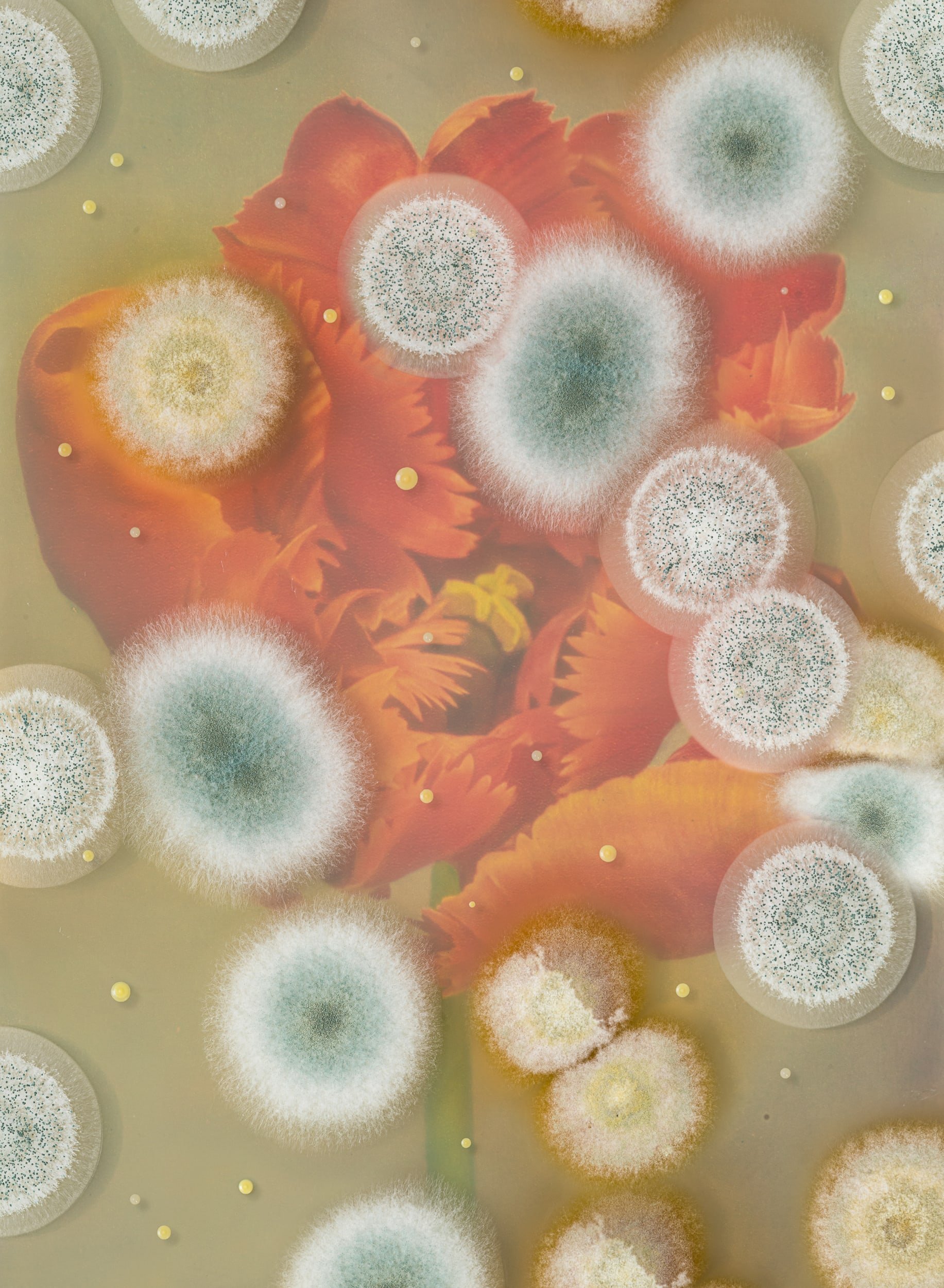
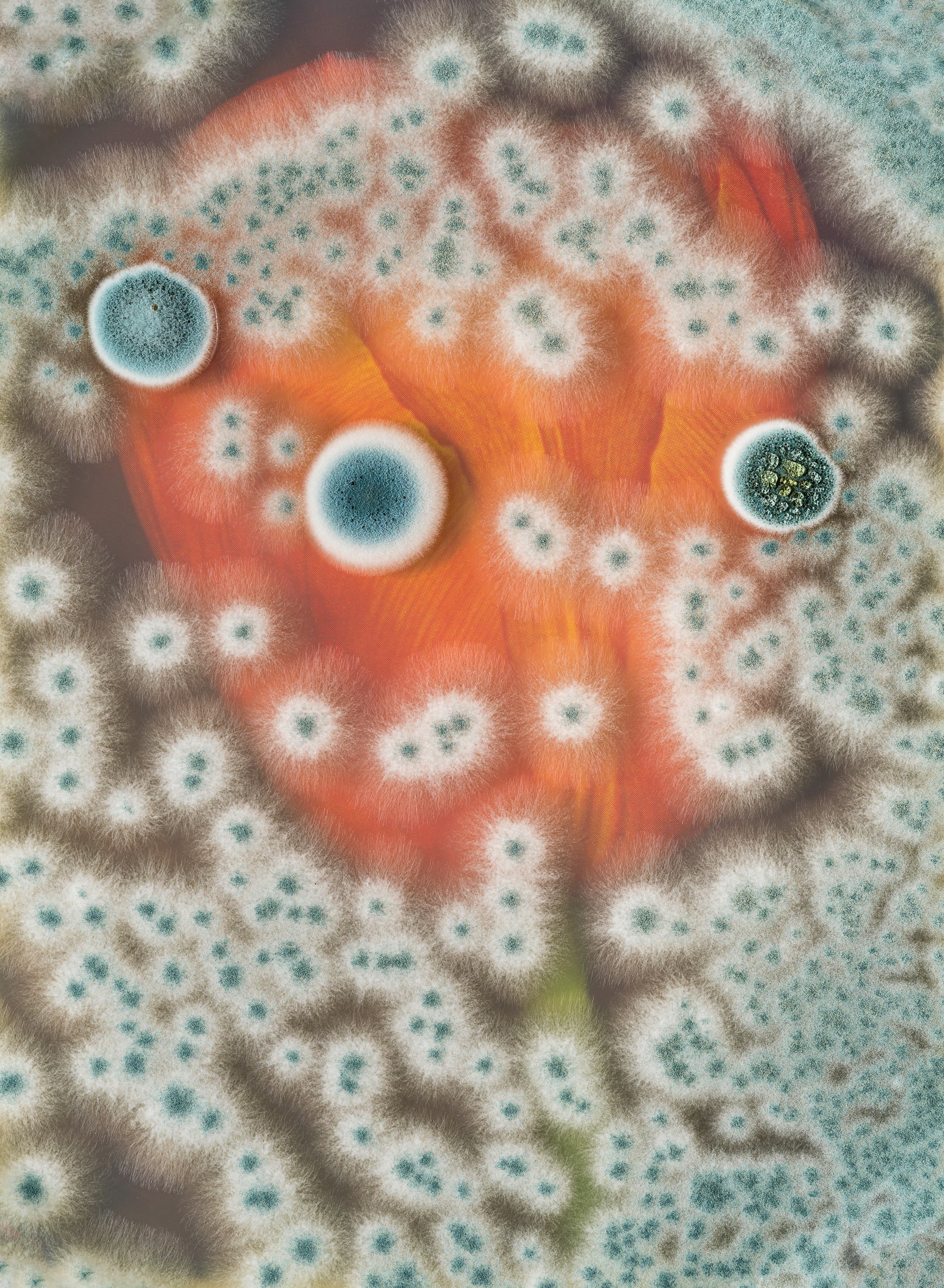
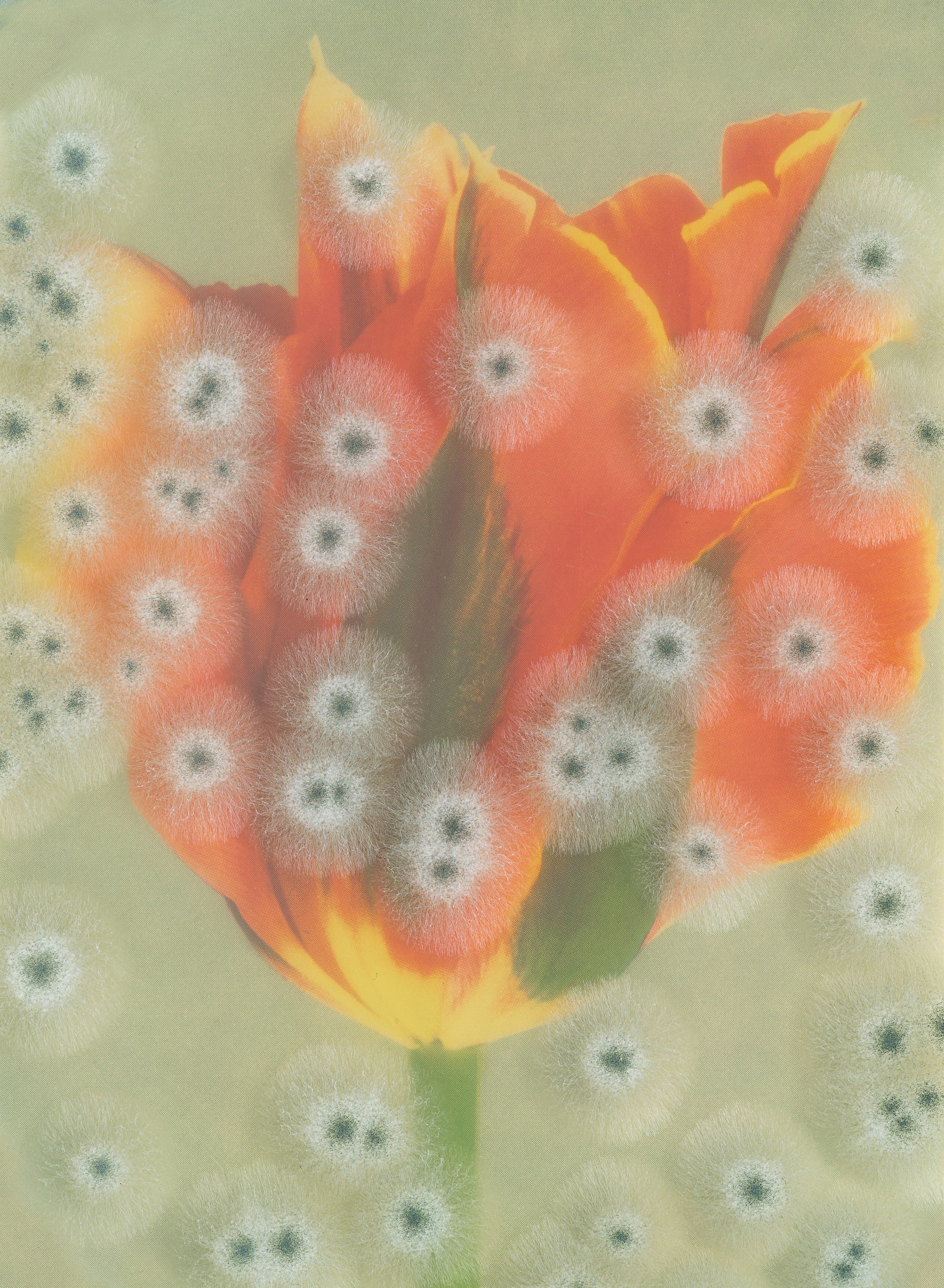
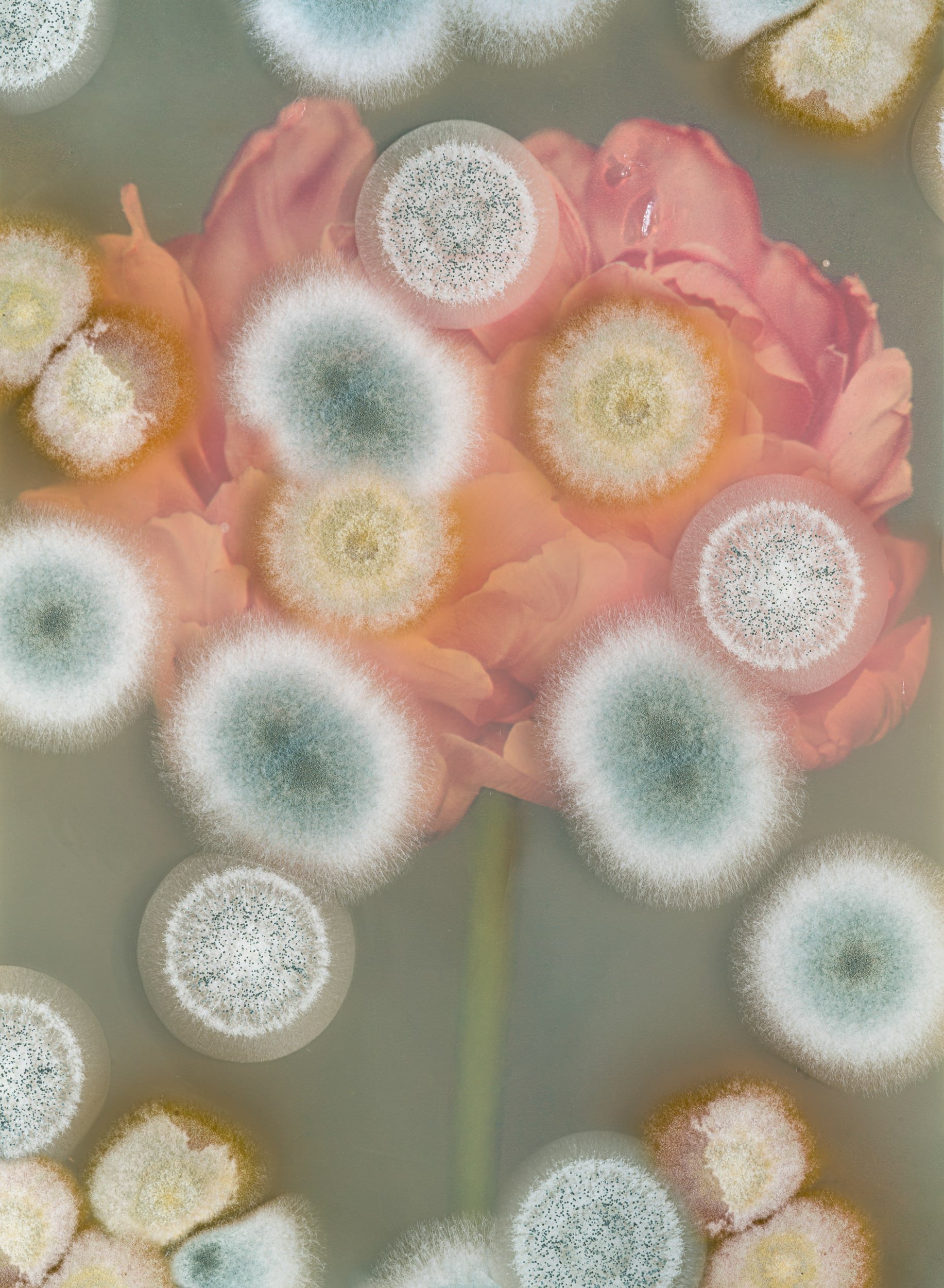
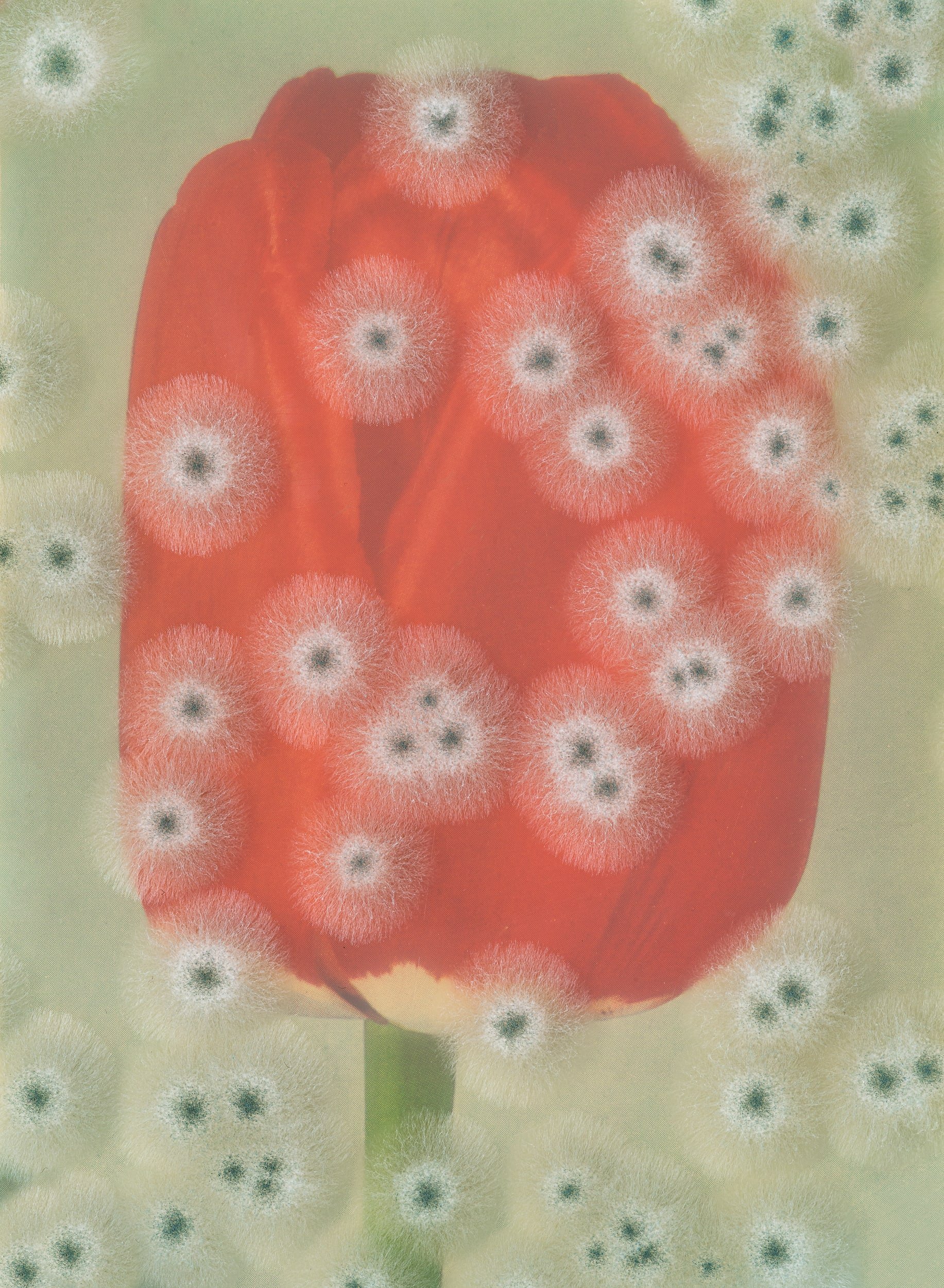
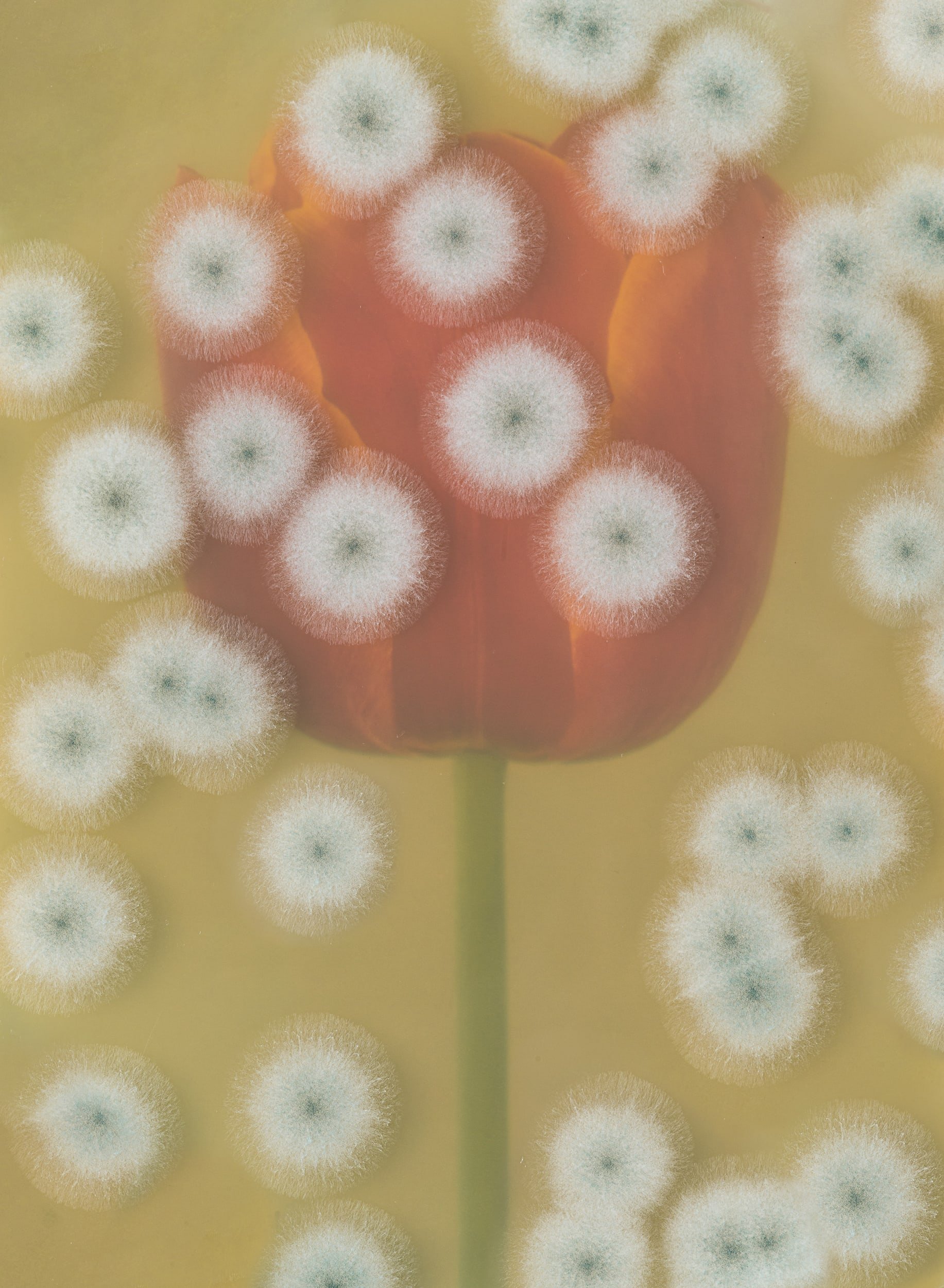
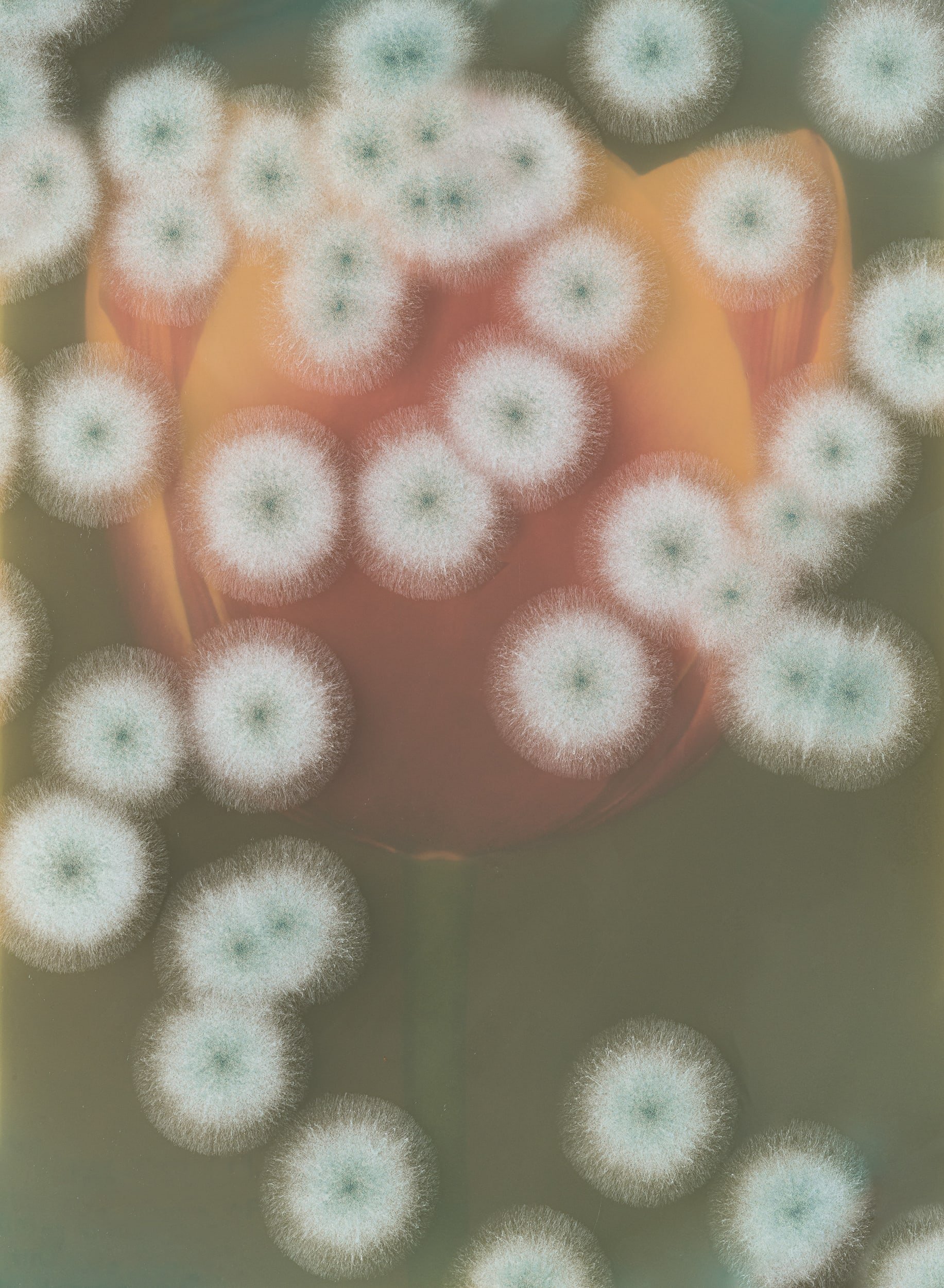

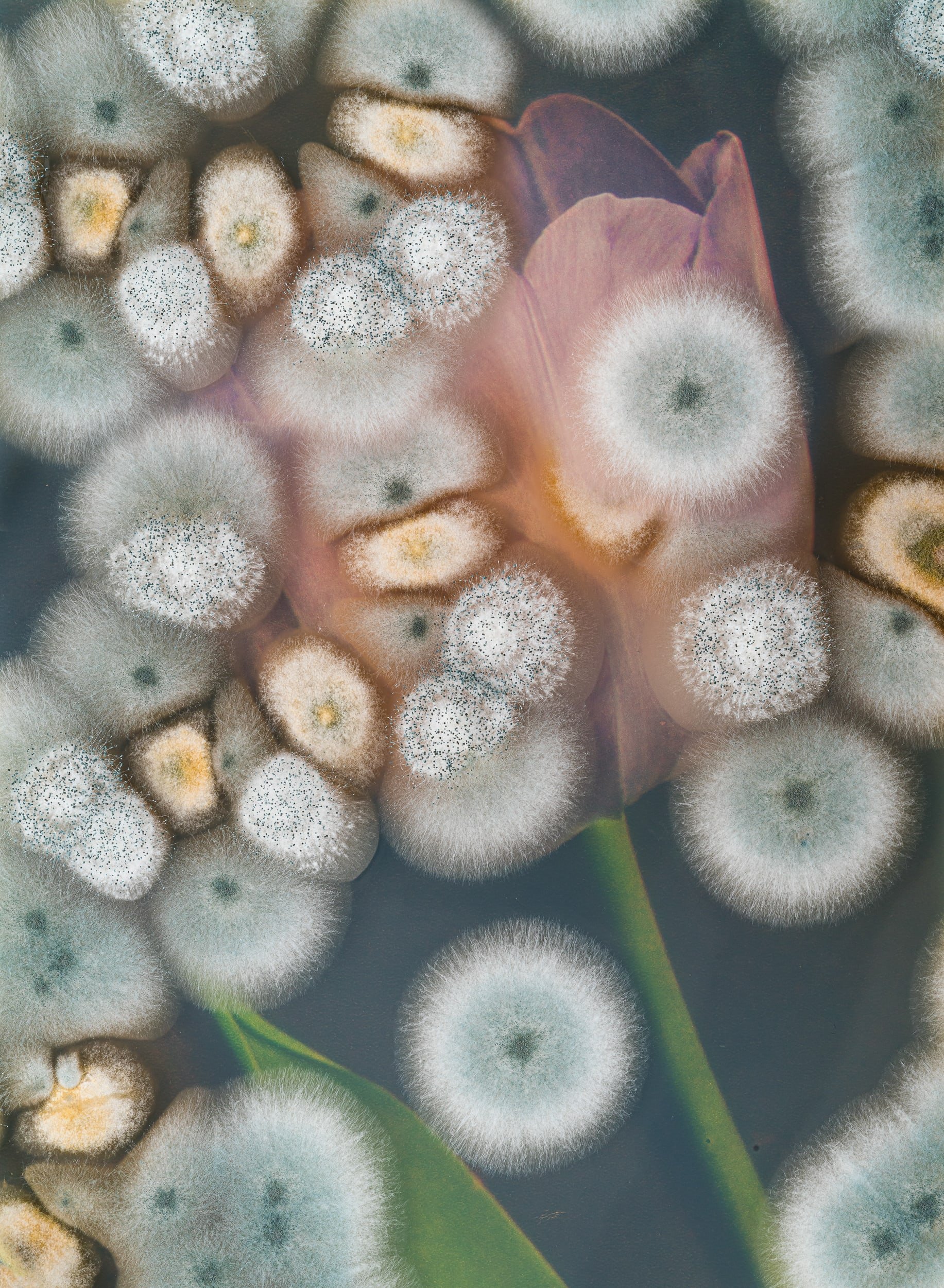
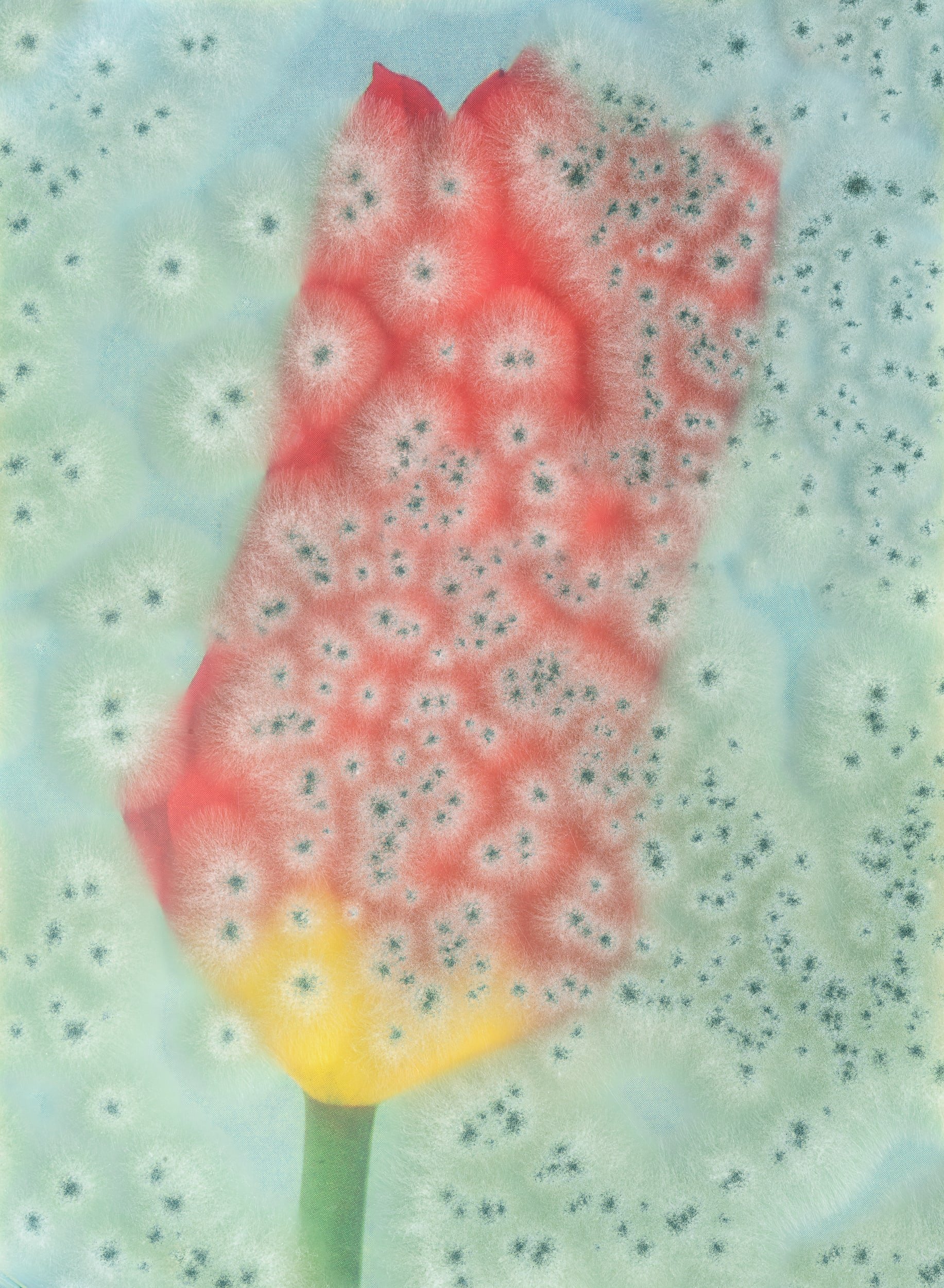
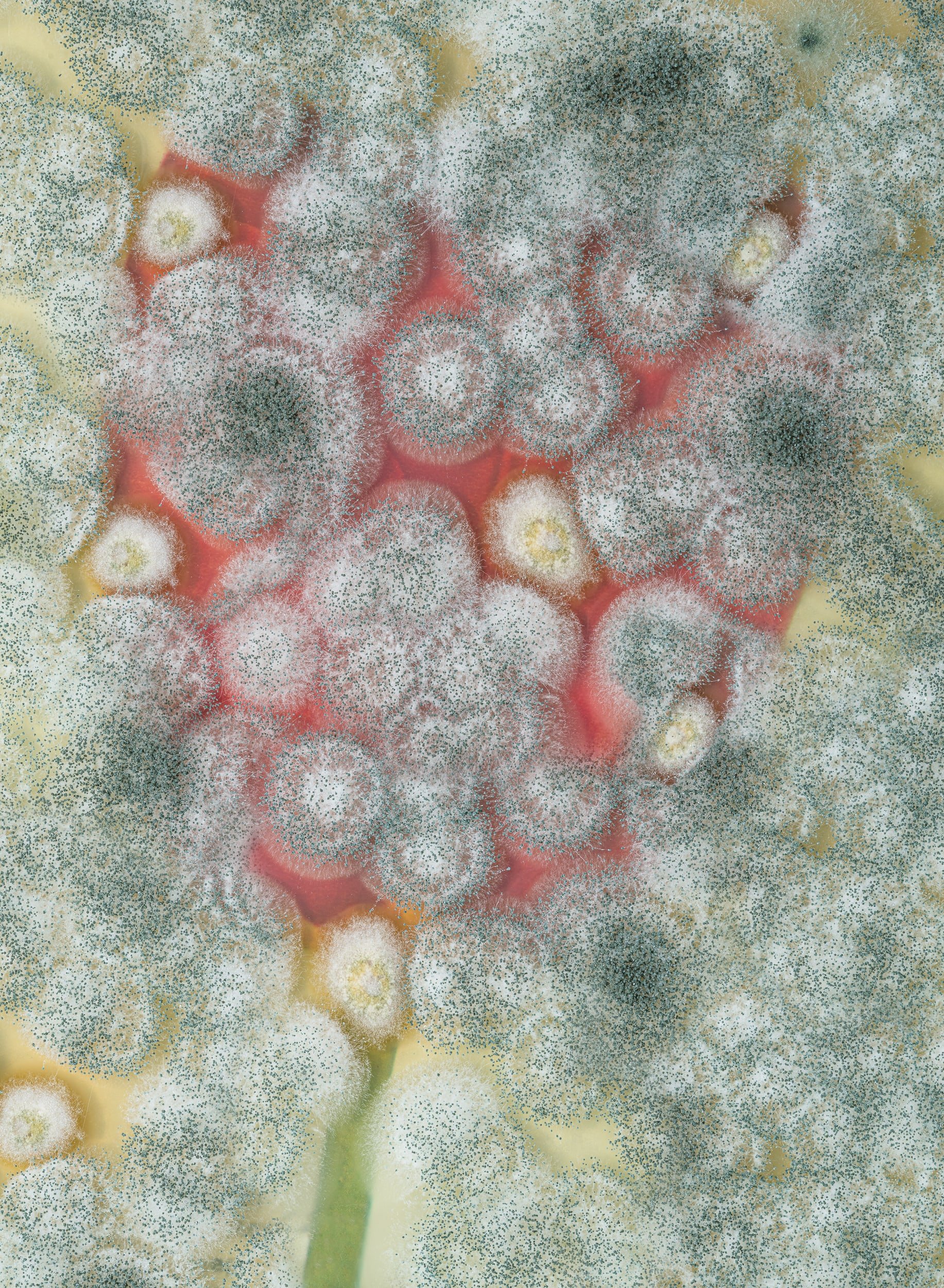


























Too close to notice
"The question of what price we are willing to pay for lush, colorful, and long-lasting floral splendor is raised with these at once beautiful and terrifying works by Jeleff and Pichler. In their series ‚Too close to notice‘, they prominently feature the environmental mold Aspergillus Fumigatus, which travels around the world on tulip bulbs. In 2009, it was identified as the cause of ominous diseases. After years of high-level use of fungicides in the tulip industry, the fungus has developed a resistance to certain antimycotics that are also used in human medicine, consequently common medications no longer work for affected patients."*
*Text taken from the exhibition Flowers Forever at Kunsthalle München
In 2009, doctors at a Dutch hospital were faced with a difficult situation: some patients contracted invasive aspergillosis. The antifungal drugs administered had no effect and several patients died. It was feared that the trigger was a resistant strain of a mold called Aspergillus fumigatus. But where did this resistance come from?
Tissue samples from aspergillosis cases archived at this hospital in previous years were analyzed. Since the new samples did not match them, it turned out that the resistance probably had an environmental source. Eventually, the resistant strain of the fungus was found in a surprising location: a flower bed in the hospital garden where tulips had been planted.
The resistant Aspergillus fumigatus turned out to come directly from the tulip bulbs – bulbs mass-produced (around 2 billion a year) by the Dutch tulip industry, which are dipped in an antifungal, azole-containing solution to stop the growth of fungi on plants. Excessive use of azoles in the production of tulip bulbs (the same antifungal agent used in patients) resulted in a resistant strain of Aspergillus fumigatus, which entered patients' lungs via the spores of the tulips from the hospital garden.
In October 2022, the WHO published a list of 18 fungal pathogens, which also includes Aspergillus fumigatus. This list is the first global attempt to systematically prioritize fungal pathogens based on their perceived public health importance.
The photo project 'Too close to notice' addresses the increasing problem of antifungal resistances, and in general antimicrobial resistance. The processes of resistance development result largely from the overuse of resources - such as, in this case, the overuse of azole against plant pathogens. Human health is closely linked to the health of animals and the environment, and the way how we condition nature. This project ultimately aims to draw attention to the complex relationship between human health and the health of plants, animals, and the ecosystem.
For the photos, a large number of different tulip bulbs were ordered from Dutch flower mail order companies. A smear was taken from each onion by our project partner – Dr. Martin Kirchmair - at the University of Innsbruck. The spores obtained from the smear were further cultivated under laboratory conditions on transparent agar culture media in Petri dishes with a diameter of 20 cm. After around 7 to 10 days of growth, the petri dish containing the pure culture of the Aspergilli from a tulip bulb was then placed on a picture from a tulip catalog showing the flowering plant of that bulb variety. The resulting photos illustrate both the blooming tulip and the 'stowaways' called Aspergillus fumigatus that were brought along on its bulb.
A project in collaboration with Klaus Pichler (photographer) and Dr. Martin Kirchmair (microbiologist, University Innsbruck)